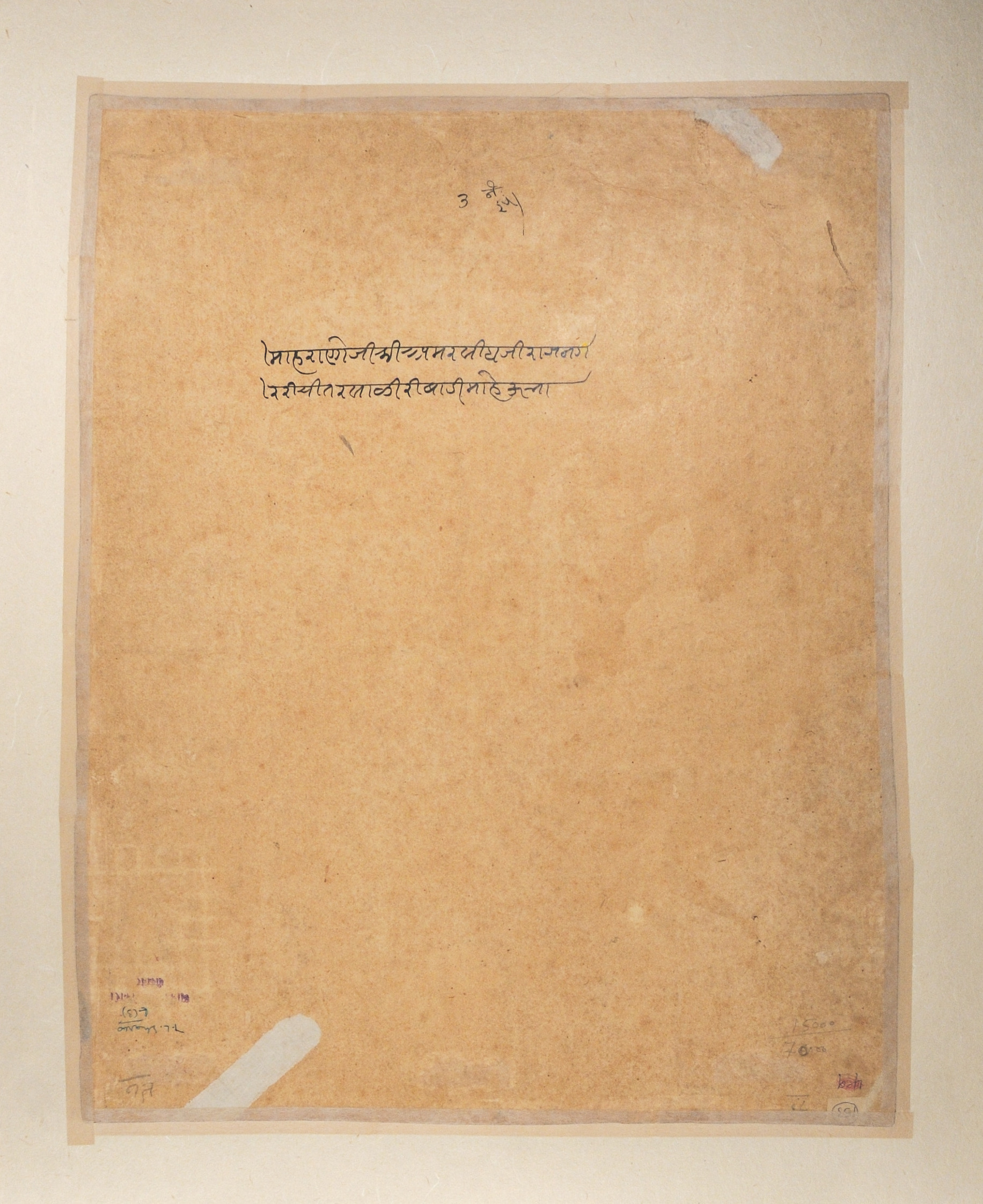Maharana Amar Singh II with Ladies of the Zenana outside the Picture Hall at Rajnagar
Attributed to Stipple Master Indian
Not on view
Rajnagar, not far from Udaipur, had a special importance for Amar Singh II and therefore also for his artists. Around the years 1692–98, the Stipple Master served as painter to Prince Amar Singh (the future Maharana Amar Singh II). In this work—as in many others by the Stipple Master—Amar Singh II appears naked to the waist, and the painter’s technique of dots and short strokes is clearly visible on his subject’s torso. The background is largely unpainted, and color accents are employed with great restraint. Particularly apparent is the artist’s use of a hierarchical ordering that depicts the prince larger than the attendant ladies of the zenana.
About the Artist
Stipple Master
Active at the Court of Amar Singh II, Udaipur, ca. 1690–1715
Following the pioneering career of Sahibdin, painters in Udaipur, Rajasthan, mainly reproduced illustrations for religious manuscripts based on his compositions. Toward the end of the seventeenth century, an artist arrived at the court who would establish a style that persisted for nearly thirty years under the prince and later ruler Amar Singh II (r. 1698–1710) and his successor Maharana Sangram Singh II (r. 1710–1734). He is identified as the Stipple Master. The style of this anonymous artist remained a singular phenomenon at the court. He favored a nearly monochrome approach, a style with precedents in both Mughal and Deccan painting, the nim qalam technique. Amar Singh likely became aware of the technique through exposure to Mughal examples. It is also documented that the ruler was interested in paintings from Bundi and Kota, and therefore, works from those places, influenced by the Chunar Ragamala Masters provided another avenue of Mughalesque influence.
The range of subjects that can be attributed to the Stipple Master makes it clear that he had direct access to his patron. Included are intimate scenes that show him in his pleasure gardens in reverie, in his summer pavilions, or in the palace with the women of his harem. The artist’s work dates mainly from the reign of Amar Singh II, and its stylistic uniformity suggests that patron and painter — as Catherine Glynn put it — had a “shared vision.”
The Stipple Master’s palette is very limited. As a rule, only the figures and portions
of the architecture or flora and fauna are set off in color, while the background remains
for the most part minimally defined or in some passages, unpainted altogether. One
work that according to its inscription shows the ruler in front of his picture gallery in
Rajnagar combines the artist’s stylistic features; the prince’s women are lined
up against an untreated background, drawing the viewer’s gaze to Amar Singh II, who
is depicted on a larger scale that reflects his importance.
The style that the Stipple Master practiced seems to have fallen out of favor during
the end of the first quarter of the eighteenth century, and by looking at paintings produced
at the royal atelier for Sangram Singh II, one quickly understands that more grand
and more complex compositions began to dominate the output of painting at Udaipur.
Due to rights restrictions, this image cannot be enlarged, viewed at full screen, or downloaded.
This artwork is meant to be viewed from right to left. Scroll left to view more.



